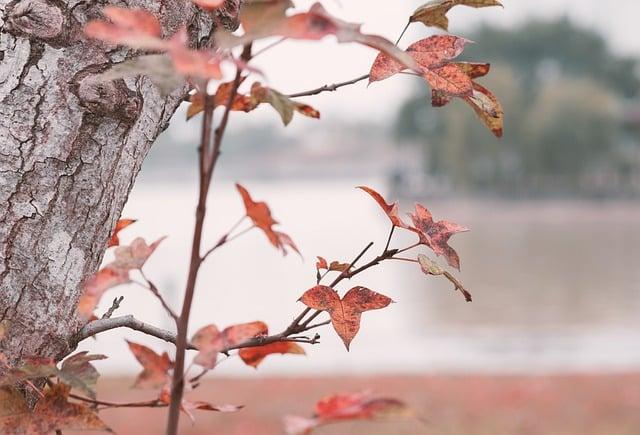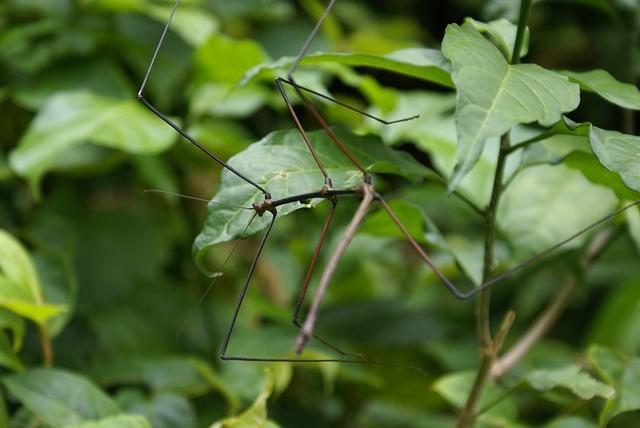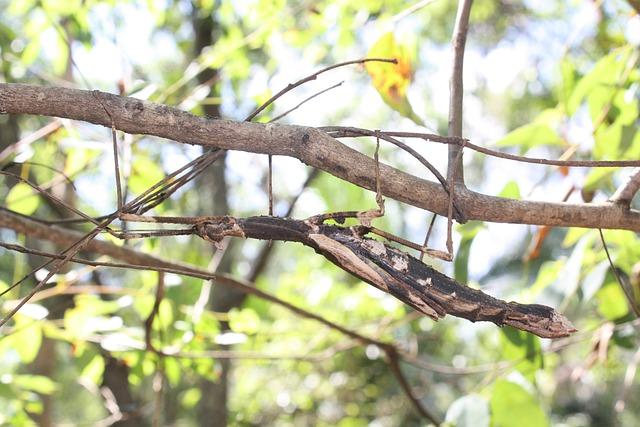- Introduction
- Habitat and Behavior of the Vietnam Stick Insect
- What Do Vietnam Stick Insects Eat? - Dietary Habits
- Lifespan, Reproduction, and Morphological Features
- Caring for a Stick Insect – Keeping Them as Pets
- Conclusion
- FAQs
- References
Introduction
Vietnam stick insects, formally known as *Medauroidea extradentata*, are fascinating creatures native to the rainforests of Southeast Asia, including Vietnam. These insects have gained a lot of attention due to their remarkable mimicry abilities, extraordinary behavior, and popularity as low-maintenance pets.
In this article, we will explore various aspects of the Vietnam stick insect, delving into its habitat and diet, unique anatomical features, and the care required when keeping one as a pet. By the end, you'll gain a comprehensive understanding of these fascinating creatures.
Habitat and Behavior of the Vietnam Stick Insect

(Image: Pixabay/@Leino194)
The Vietnam stick insect is primarily found in wet and humid tropical rainforests. They thrive in dense vegetation where they can use their natural camouflage to blend into leaves and branches, evading predators like birds, reptiles, and larger insects. This remarkable stick-like appearance, along with slow, deliberate movements, helps them avoid detection in the wild.
The behavior of the Vietnam stick insect is largely shaped by its need for survival. They remain still for long periods of time to resemble twigs or branches, helping them stay hidden from potential threats. When threatened, some species may even sway gently, mimicking the movement of a leaf or stick in the breeze.
Interestingly, Vietnam stick insects are primarily nocturnal, being more active at night. During the day, they tend to stay still to further enhance their camouflage. In captivity, this pattern of behavior persists, which is something pet owners should be aware of.
What Do Vietnam Stick Insects Eat? - Dietary Habits

(Image: Pixabay/@Windy247)
The diet of Vietnam stick insects mainly consists of plant material, making them herbivores. In the wild, they munch on leaves from plants such as brambles, ivy, and other foliage commonly found in their rainforest habitats. Their digestive systems are adapted to efficiently process plant matter, especially tough, fibrous leaves.
When kept in captivity, Vietnam stick insects require a diet that closely mirrors their natural one. Fresh leaves of blackberry, raspberry, and oak can be offered as food. It’s crucial to ensure that any plants used as food for these insects have not been treated with pesticides, as chemicals can be harmful to these delicate creatures.
Providing adequate moisture is also important. This can be achieved by misting the leaves with water occasionally. Although they don’t drink from water dishes, they get sufficient hydration through the leaves they eat during feeding.
Lifespan, Reproduction, and Morphological Features

(Image: Pixabay/@Janvanbizar)
Vietnam stick insects are relatively long-lived for insects, typically surviving between 12 to 18 months in captivity, and they reach maturity around 4-6 months after hatching. They reproduce through both sexual and asexual reproduction. In some cases, female stick insects can reproduce without males, through a process called parthenogenesis, in which they lay eggs that contain only female offspring.
In terms of morphology, Vietnam stick insects have an elongated body resembling a twig or stick. Their coloration varies, but most exhibit a brown or green hue to match their surroundings. Adult females can grow up to 10 cm long, and unlike some other stick insect species, they do not develop wings. Males are usually smaller and slimmer compared to females.
The body features of these insects allow them to move quietly and meticulously along branches and leaves. Additionally, their legs are perfectly designed for grasping narrow surfaces, giving them stability as they traverse the forest canopy or the walls of their enclosures.
Caring for a Stick Insect – Keeping Them as Pets

(Image: Pixabay/@MrsKirk72)
Stick insects have gained immense popularity as pets, largely because of their simple care requirements and intriguing behavior. If you're considering bringing a Vietnam stick insect into your home, it’s important to create a captive environment that mimics its natural habitat, ensuring it remains healthy and stress-free.
Their enclosure should be an upright terrarium that provides enough climbing space. A good rule of thumb is to make sure the length of the enclosure is at least three times as tall as the insect itself. The terrarium should also include natural branches and plenty of leaves for the stick insect to feed on—these not only serve as food but also provide necessary enrichment.
Keep the temperature within the enclosure between 70-80°F (21-27°C) to mimic the warm climate of their native rainforests. Humidity should be regulated to 60-70%, which can be maintained by lightly misting the tank daily. Lastly, cleanliness is crucial, so ensure the enclosure is cleaned regularly to avoid mold buildup from decaying plant matter.
Conclusion
Vietnam stick insects are truly remarkable creatures, displaying fascinating habits, unique anatomy, and surprising ease of care. Whether you're observing them in the wild or keeping them as pets, Vietnam stick insects offer intriguing insights into the world of camouflaged, arboreal insects. If you’re thinking about getting one as a pet, always remember the importance of replicating their natural habitat and providing the high-quality food they require to thrive in captivity.
FAQs
Do Vietnam stick insects bite?
No, Vietnam stick insects are gentle and harmless insects. They do not bite or sting, making them safe pets even for children. They rely on camouflage to protect themselves rather than aggression.
How often should I feed my Vietnam stick insect?
You should provide fresh leaves every day or every two days, depending on the amount they eat. Ensuring the leaves remain fresh and untreated by pesticides is essential for their health.
Can a Vietnam stick insect regenerate lost limbs?
Yes, especially younger stick insects have the ability to regenerate missing limbs during molting phases. That said, adult stick insects are less likely to regenerate a lost limb fully.
How do I maintain humidity in my stick insect's enclosure?
The simplest way is to mist the enclosure with water using a spray bottle. You should do this once every day to keep the humidity levels up. Avoid excessive dampness, as mold could be harmful.
Are Vietnam stick insects social?
They are generally solitary creatures, although they may coexist peacefully with other stick insects as long as adequate space and food are available. Overcrowding can lead to stress and competition for resources.

